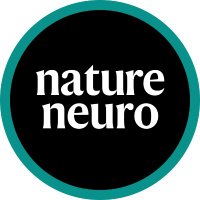
Chris Griffey
@c_griffey
learning how to be a physician scientist @ColumbiaPS • 🏳️🌈 he/him
ID: 83238461
https://scholar.google.com/citations?user=JS1CuJMAAAAJ&hl=en&oi=ao 17-10-2009 22:43:48
19 Tweet
436 Followers
1,1K Following



Excited to share our perspectives on diseases that have neurodegenerative and neurodevelopmental overlap and the need to study neurogenetic disorders across the lifespan: nature.com/articles/s4158… Wendy Chung Sarah O'Shea, MD, MSc Nat Rev Neurology


The perennial question of neurodegeneration is "why some neurons, not others?" Our work (Evan Macosko, @abdul_squared, et al, myself), in Nature Neuroscience, has led us to believe that the answer, for Parkinson's disease, lies in the genetics: nature.com/articles/s4159… And,two things: (1/4)

Inhibiting the mediodorsal and midline #thalamus in adolescent mice leads to lastingly decreased excitatory drive onto PFC neurons and PFC-dependent cognitive deficits during adulthood New from Christoph Kellendonk, Alexander Harris, Laura Benoit and colleagues nature.com/articles/s4159…

A new preprint from the lab, with @mollymozzarella Stephane Castel and others! We developed methods for RNA-seq from non-invasive biospecimens. TL;DR: hair follicles and urine have major potential for large-scale transcriptomics. 🧵👇biorxiv.org/content/10.110…


our newest in Cell Reports!


Light-regulated TurboID, or LOV-Turbo, is a feat of engineered allostery, created by Songyi Lee and Joleen Cheah via structure-guided design, then optimized by yeast display directed evolution. Activity is nearly undetectable in the dark state, but biorxiv.org/cgi/content/sh…


I am thrilled to share our new findings associating the depletion of a unique microglial subpopulation with #Parkinsons disease and characterizing the transcriptional and chromatin signatures of microglia in PD! Check it out - biorxiv.org/content/10.110… Parkinson's Foundation

Excited to share some cool work from @ShirvalkarLab ChangLabUCSF uncovering human chronic pain biomarkers! nature.com/articles/s4159…

Endocannabinoids are powerful synaptic modulators, but there's so much we don't know about how they signal. Here we show that *postsynaptic synucleins* are required! Shoutout Yue Sun🧬🐀🧠, Yulong Li Lab, @SudhofThomas, Jun Ding and the rest of the team! nature.com/articles/s4159…

The findings of a study in Nature Neuroscience establish a connection between functional and genetic dopamine subtypes and demonstrate that molecular expression patterns can serve as a common framework to dissect dopaminergic functions. go.nature.com/3YwzfpW


It is with great joy that I share our manuscript, out today in Neuron 🎊 Thank you to my co-author Connor Monahan and PhD mentors Dritan Agalliu David Sulzer 🧠 Interaction of an α-synuclein epitope with HLA-DRB1∗15:01 triggers ent... sciencedirect.com/science/articl…


Very happy to share my first paper from the McBride lab Heidi McBride, Ph.D revealing that mitochondrial DNA (mtDNA) can escape into cytosol through “leaky lysosomes” and cause pyroptotic cell death. (1/9) biorxiv.org/content/10.110…